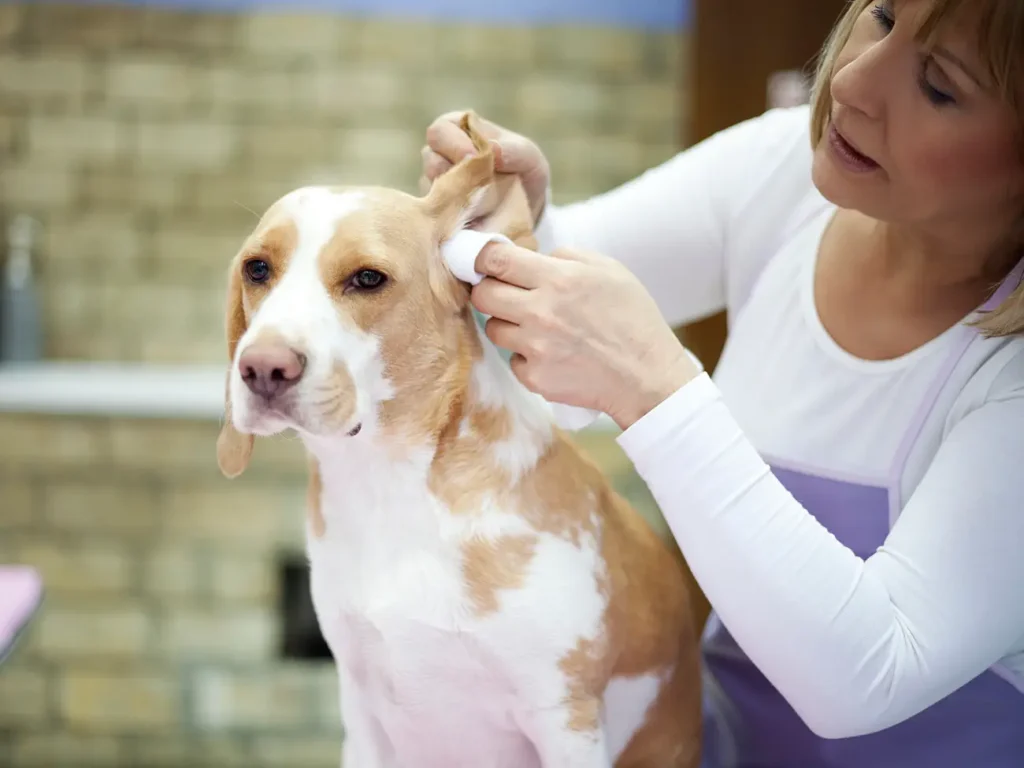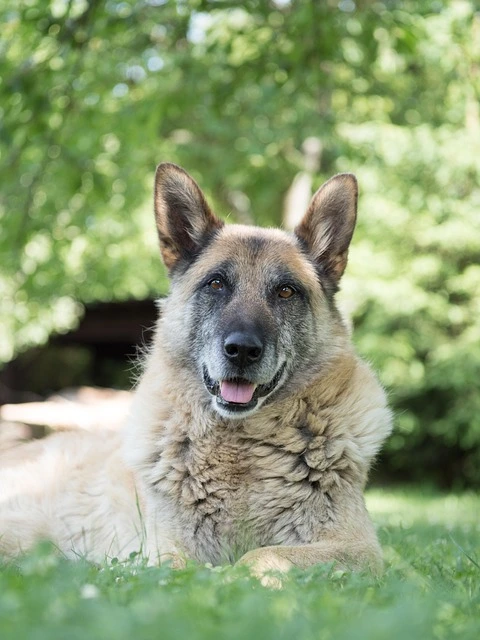A safe, vet-approved dog ear cleaning solution keeps your dog’s ears free from wax, debris, and infection-causing microbes. To clean, lift the ear flap, fill the canal with solution (avoid touching the tip to the ear), massage the base for 20–30 seconds, let your dog shake, and gently wipe the outer ear with gauze. Avoid alcohol or hydrogen peroxide—they can irritate sensitive tissue. For most dogs, cleaning weekly or after swimming helps prevent painful infections.

Table of Contents
Introduction
You hear it again—your dog is shaking their head and scratching their ears. A quick sniff reveals that musty smell you’ve come to dread. Ear discomfort is one of the most common problems vets see, and in many cases, it’s preventable with the right ear cleaning routine.
In this guide, we’ll combine veterinary insight with years of hands-on dog care experience to help you choose the best dog ear cleaning solution, master safe cleaning techniques, and avoid common mistakes—so your pup stays comfortable, healthy, and infection-free.
Why Proper Ear Cleaning Matters
Anatomy & Risk Factors
A dog’s ear canal is L-shaped, trapping moisture, wax, and debris—making it easy for bacteria and yeast to grow.
Breeds with floppy ears (like Basset Hounds and Cocker Spaniels), frequent swimmers, and dogs with allergies are most at risk.
The Real-Life Cost of Neglect
Sarah, a Golden Retriever owner, spent over $800 treating chronic ear infections that could have been prevented with regular cleaning. “I wish I’d started sooner,” she says—a sentiment echoed by many owners.
Recognizing When Cleaning or a Vet Visit is Needed
Signs to clean:
- Mild odor
- Wax buildup
- Occasional head shaking or scratching
Signs for vet care:
- Strong odor
- Redness or swelling
- Discharge (yellow, green, black, coffee-ground texture)
- Pain or head tilting
The Royal Veterinary College found floppy-eared breeds have much higher ear infection rates.
Step-by-Step: How to Clean Your Dog’s Ears
Preparation
- Choose a quiet, easy-to-clean spot
- Gather: vet-approved cleaner, gauze or cotton balls, towel, treats
- Warm solution to room temp for comfort
Cleaning Process
- Inspect first – If redness, swelling, or pain is present, stop and see your vet.
- Apply solution – Hold ear flap upright, fill canal (10–15 drops small dogs, 20–30 for large).
- Massage base – 20–30 seconds, listening for a “squish”.
- Let them shake – This helps expel debris.
- Wipe gently – Use gauze on the visible outer ear only.
- Reward – Treats and praise to build positive associations.
Frequency:
- Weekly: floppy-eared breeds, swimmers, allergy-prone
- Bi-weekly: most dogs with moderate wax
- Monthly/as needed: dogs with upright ears and no issues
Top Vet-Approved Dog Ear Cleaning Solutions
Best Overall: Veterinary Formula Clinical Care Ear Therapy
Veterinary Formula Clinical Care Ear Therapy
- Ketoconazole + hydrocortisone for cleaning and mild inflammation
- Pleasant scent, non-irritating
- Ideal for mild infections and maintenance
- ~$15 for 8oz
Best for: Routine care, yeast-prone breeds
Best for Sensitive Dogs: Zymox Otic Enzymatic Solution
- Three-enzyme system fights microbes naturally
- No pre-cleaning needed before application
- Hydrocortisone option for itch relief
- Gentle for allergy-prone skin
Best for: Dogs with allergies, recurring ear issues
Budget Pick: Nutri-Vet Ear Cleaner
- Aloe vera for soothing
- Deodorizing properties
- Under $10 for 8oz
- Effective for regular upkeep
Best for: Multi-dog households, basic maintenance
Premium Clinic-Grade: Pet MD Tris Flush
- TrizEDTA disrupts bacterial biofilms
- Ketoconazole antifungal
- Used by vets for chronic cases
Best for: Stubborn infections, vet-recommended care
Convenient Wipes: HICC PET Ear Cleaner Wipes
- Pre-moistened for travel or quick cleanups
- Great for dogs who dislike liquid cleansers
Best for: Travel, touch-ups, anxious dogs
Homemade vs. Commercial Solutions
When Homemade Works:
- Equal parts distilled water + white vinegar for basic maintenance (no infection present)
- Gentle aloe/mineral oil blend for sensitive ears
Only use with vet guidance.
Why Commercial Often Wins:
- pH-balanced for canine ears
- Antimicrobial action
- Safety-tested and consistent
- Easier dosing and application
Common Mistakes to Avoid
- Over-cleaning – Can strip protective oils and irritate tissue
- Using Q-tips – Risk of damage and pushing debris deeper
- Cleaning infected ears without vet guidance – May worsen condition
- Stopping medicated treatment early – Leads to recurrence
When to See a Vet
Seek veterinary care if your dog has:
- Severe odor
- Swelling or discharge
- Neurological signs (head tilt, loss of balance)
- Recurring infections despite good home care
FAQ
How often should I clean my dog’s ears?
Weekly for high-risk breeds; otherwise monthly or after swimming.
Can I use hydrogen peroxide?
No—it irritates and can harm ear tissue (AKC advice).
Should I clean both ears if only one is dirty?
Yes—prevents cross-contamination.
Conclusion
Healthy ears mean a happier dog. By combining the right dog ear cleaning solution with safe technique, you can prevent infections, reduce vet bills, and keep your pup comfortable for years to come. Start today—your dog’s tail wags will thank you.

